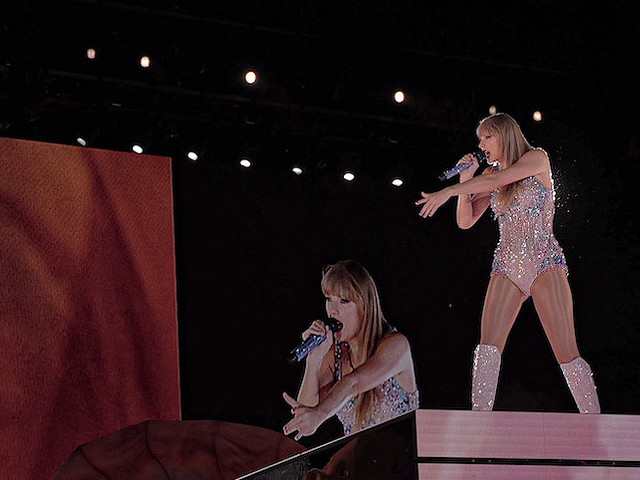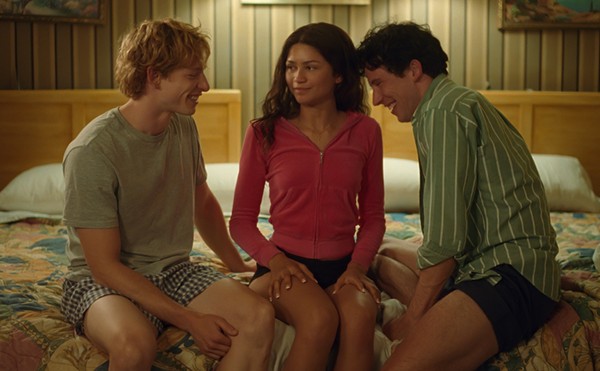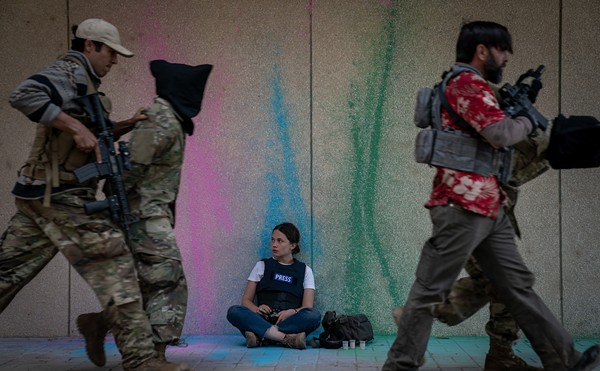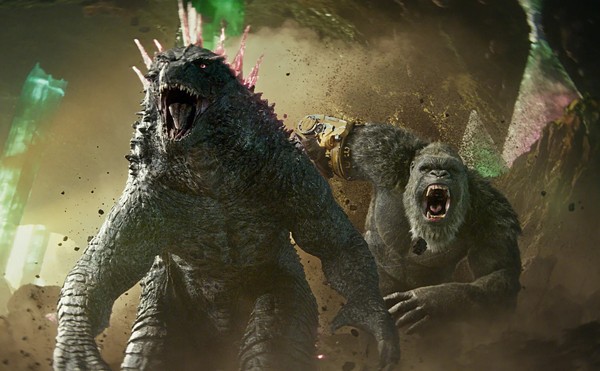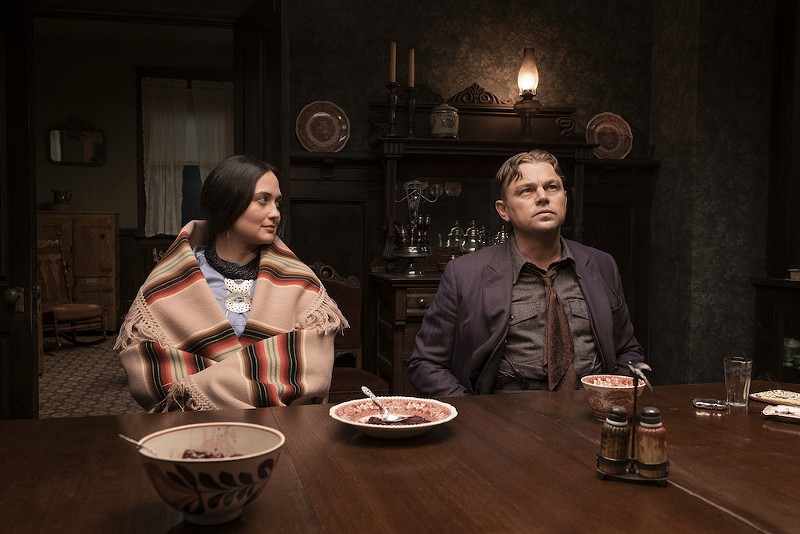
Although he’s primarily (if reductively) identified with gangsters and New York City, Martin Scorsese has long expressed an interest in directing a Western. John Ford’s The Searchers serves as a particular touchstone — Harvey Keitel delivers a lengthy disquisition on the film in Scorsese’s first feature, Who’s That Knocking on My Door, and Taxi Driver consciously evokes its plot — but Scorsese adores the genre in all its permutations and periods. In Killers of the Flower Moon, the 80-year-old auteur at last realizes that delayed ambition.
But despite its Oklahoma setting and undeniably epic scale, the film upends most of our usual expectations for the Western, with its heroicized white pioneers and gunfighters, and especially its simple-minded dialectic of civilization and savagery. Surprisingly contemplative, the film features more than its share of violent incidents, but they often occur offscreen or are presented with a distancing matter-of-factness that denies the audience any visceral thrills. And although Killers of the Flower Moon includes an admirable lawman in the person of early FBI agent Tom White (Jesse Plemons), it privileges the Native American perspective. Westerns sympathetic to the Indigenous population certainly exist — even Ford gave a belated nod in that direction with Cheyenne Autumn — but Scorsese’s film seems uniquely willing to foreground whites’ greed and nakedly genocidal impulses.
Based on David Grann’s bestselling nonfiction account of what was dubbed the Reign of Terror, Killers of the Flower Moon recounts the outbreak of an alarming number of murders on the Osage reservation from 1918-31. Oil had been discovered on the reservation in the late 1800s, and when its value skyrocketed in the first decades of the 20th century, the once-impoverished Osage — whose enrolled members each had an equal share of the money generated by the land’s ever-multiplying wells — became suddenly and fabulously wealthy. This influx of riches inevitably made the Osage vulnerable to malefactors intent on stealing their resources. As the local economy boomed and new arrivals flooded reservation towns such as Fairfax, white residents charged the Osage wildly inflated prices and, with the U.S. government’s connivance, assumed stewardship of the bank accounts of supposedly non-competent tribal members. More menacing still, because oil headrights could be inherited by non-Osage, white “suitors” plotted to marry and then dispatch Native women, whether slowly through poisoning or expeditiously with a bullet.
Although this plundering of the tribe’s money was widespread, Killers of the Flower Moon focuses on the criminal depredations of William Hale (Robert De Niro), an influential cattleman known as the King of the Osage, who mercilessly exploits the Natives while pretending to serve as their benevolent protector. As his primary cat’s paw, Hale employs his avaricious and helpfully dim nephew Ernest Burkhart (Leonardo DiCaprio), who with his brother Byron (Scott Shepherd) becomes hopelessly entangled in his uncle’s elaborate web of deceit.
Hale engages in an extensive network of schemes — including several almost comically obvious insurance scams — but central to his machinations is the Osage family of Mollie Kyle (a transcendent Lily Gladstone). Shortly after disembarking at Fairfax’s bustling railway station, returning World War I soldier Ernest starts work as a driver, and Mollie soon becomes one of his regular passengers. Apparently smitten, Ernest begins a courtship, and when Mollie reciprocates his affections, the two are wed. But in the years following their marriage, Mollie’s mother and three sisters all die in mysterious or bloody fashion, with their headrights each coming to her in turn. Thus, when Mollie’s own health declines precipitously — accelerated by allegedly life-saving shots of insulin — Ernest stands to inherit the family’s vast and now fully consolidated fortune.
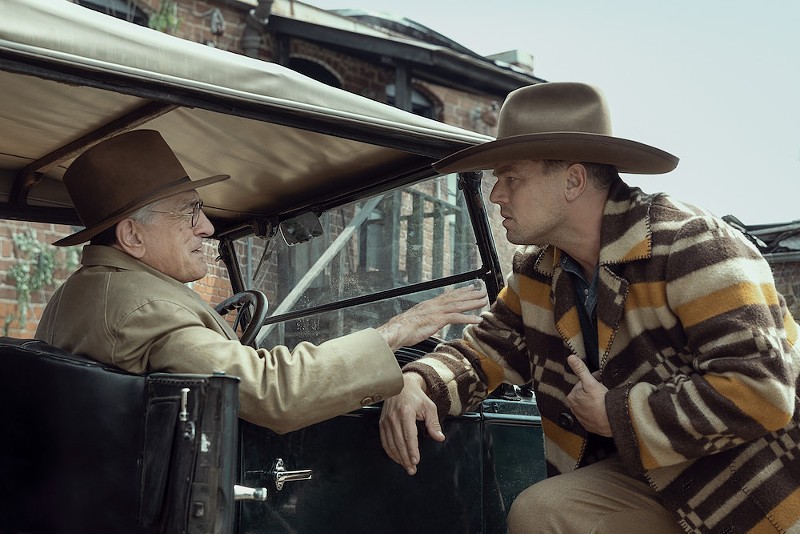
The narrative of Killers of the Flower Moon sprawls much further, with an abundance of murders, a clandestine FBI investigation, courtroom dramatics, respectfully presented Osage rituals, brief eruptions of magical realism and even a breathlessly staged radio play that provides a witty summary of the principals’ later lives. During its eventful three-and-a-half hours, the film also offers periodic flashes of spectacle: Fairfax’s oppressively overcrowded streets and railway station, a panorama of bristling oil derricks stretching to the landscape’s horizon, a field engulfed in flames illuminating the night sky. Paradoxically, however, the film proves most effective when its pace slows and the camera moves in close for charged, intimate scenes of dialogue: the conspiratorial exchanges between Hale, Ernest and their accomplices; White’s subtly probing interrogations of suspects; and, most compellingly, Ernest and Mollie’s quiet (and often disquieting) moments together.
These scenes with Ernest and Mollie form the dark heart of Killers of the Flower Moon, and they extend Scorsese’s ongoing (and altogether bleak) examination of marriage, a thematic preoccupation that threads through such apparently disparate works as Alice Doesn’t Live Here Anymore, New York, New York, Raging Bull, Goodfellas, Cape Fear, Casino and The Wolf of Wall Street. Although there’s no question of Ernest’s complicity in at least four murders — and he seems largely untroubled by them — the sincerity of his love for Mollie appears equally indisputable. Ernest may have pursued the marriage because of Hale’s encouragement, but there’s clear tenderness in the relationship, and the anguish he feels as Mollie deteriorates (thanks, of course, to the tainted insulin shots he administers) is bizarrely genuine. And Mollie, even when confronted with Ernest’s significant role in her sister’s death, can’t renounce her love for him: They remain maddeningly bound together.
Another in an impressively diverse string of late-career triumphs — The Wolf of Wall Street, Silence, The Irishman — Killers of the Flower Moon offers more proof (if any is needed) of Scorsese’s astonishing range and continuing mastery.
Killers of the Flower Moon
Directed by Martin Scorsese. Written by Eric Roth and Martin Scorsese, based on the book by David Grann. Opens October 20.
Follow us: Apple News | Google News | NewsBreak | Reddit | Instagram | Facebook | Twitter | Or sign up for our RSS Feed


